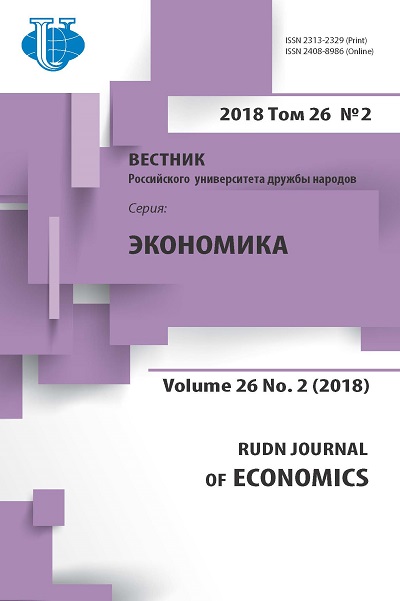EVALUATION OF ECOSYSTEM SERVICES AS A CORPORATE INSTRUMENT FOR ACHIEVEMENT OF THE SUSTAINABLE DEVELOPMENT
- Authors: Starikova EA1
-
Affiliations:
- Moscow State Institute of International Relations (University) of the MFA of Russia
- Issue: Vol 26, No 2 (2018)
- Pages: 258-266
- Section: ECONOMIC GROWTH AND SOCIO-ECONOMIC DEVELOPMENT
- URL: https://journals.rudn.ru/economics/article/view/18904
- DOI: https://doi.org/10.22363/2313-2329-2018-26-2-258-266
Cite item
Full Text
Abstract
The article is devoted to the issue of ecosystem services assessment that is perceived as an important corporate instrument for implementation of the “ecological” Sustainable Development Goals (SDGs) adopted by the UN in September 2015. The author considers the evolution of the natural capital and ecosystem services as a scientific phenomenon and underscores its growing influence on the sustainable economic growth. The article shows the impactful cases that demonstrate how businesses in collaboration with conservation organisations successfully incorporate the practices of ecosystem services assessment into their activities.
About the authors
E A Starikova
Moscow State Institute of International Relations (University) of the MFA of Russia
Author for correspondence.
Email: evan3132@gmail.com
Lecturer, Economic Policy and PPP Department, Moscow State Institute of International Relations (MGIMO-University).
76, Prospeсt Vernadskogo, Moscow, 119454, Russian FederationReferences
- Bobylev S.N., Zaharov V.M. (2009) Jekosistemnye uslugi i jekonomika. M.: Institut ustojchivogo razvitija / Centr jekologicheskoj politiki Rossii. 72 s. (In Russ).
- Costanza R., Daly H.E. (1992) Natural Capital and Sustainable Development. Conservation Biology. Vol. 6. No. 1. P. 37—46.
- Costanza R., d’Arge R, Groot R, Farber St. (1987) The Value of the World’s Ecosystem Services and Natural Capital. Nature. Vol. 387. Pp. 253—260.
- Dow and The Nature Conservancy Collaborate to Better Understand the Business Value of Freshwater Assets / MIDLAND, MI — May 04, 2015. URL: http://www.dow.com/en-us/news/press-releases/ dow-and-the-nature-conservancy-collaborate (accessed: 27.02.2018).
- Ecosystems and Human Well-Being: Synthesis. Millennium Ecosystem Assessment. 2005. URL: https:// www.millenniumassessment.org/documents/document.356.aspx.pdf (accessed: 27.02.2018).
- Kering Environmental Profit & Loss (E P&L). Methodology & 2013 Group Results. Pp. 46—62. URL: http://www.kering.com/sites/default/files/document/kering_epl_methodology_and_2013_group_ results_0.pdf#page=24 (accessed: 27.02.2018).
- Pagiola S., Ritter K., Bishop J. (2004) Assessing the Economic Value of Ecosystem Conservation / The World Bank Environment Department in collaboration with The Nature Conservancy and IUCN — The World Conservation Union, October 2004. URL: https://www.cbd.int/doc/case-studies/inc/ cs-inc-iucn-nc-wb-en.pdf (accessed: 27.02.2018).
- Porter M. E., Kramer M. R. (2011) Creating Shared Value/ Harvard Business Review. Vol. 89. Issue 1/2. Pp. 62—77.
- Reddy S. M.W, McDonald R.I., Maas A.S., Rogers A., Girvetz E.H., North J., Molnar J., Finley T., Leathers G., DiMuro J.L. (2015) Finding solutions to water scarcity: Incorporating ecosystem service values into business planning at The Dow Chemical Company’s Freeport, TX facility / Ecosystem Services 12. Pp. 94—107.
- Stern N. (2007) The Economics of Climate Change: the Stern review. Cambridge University Press. 700 p.















